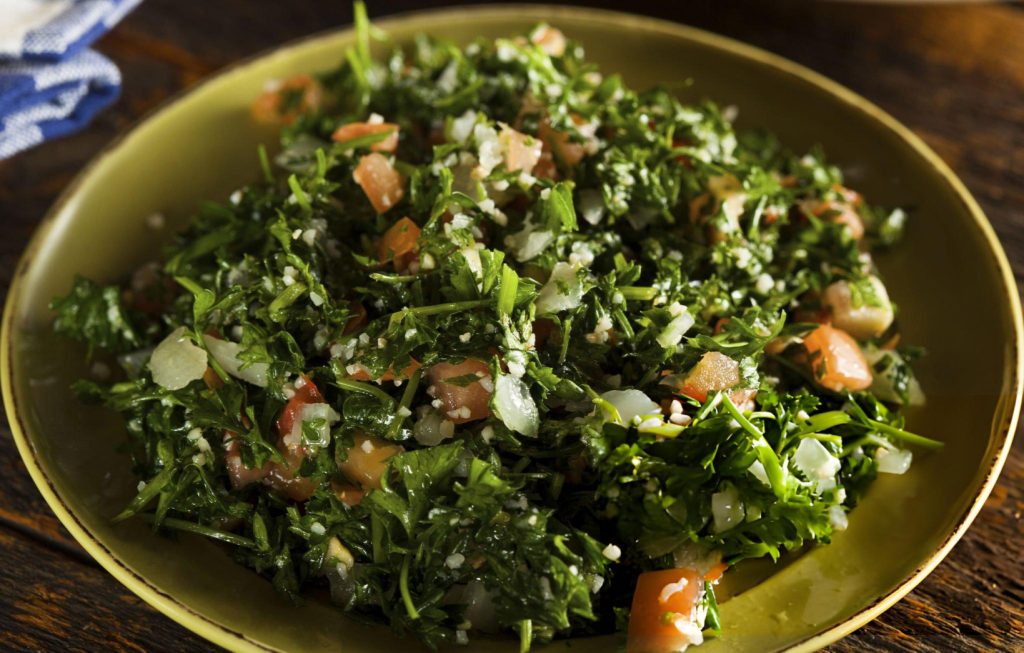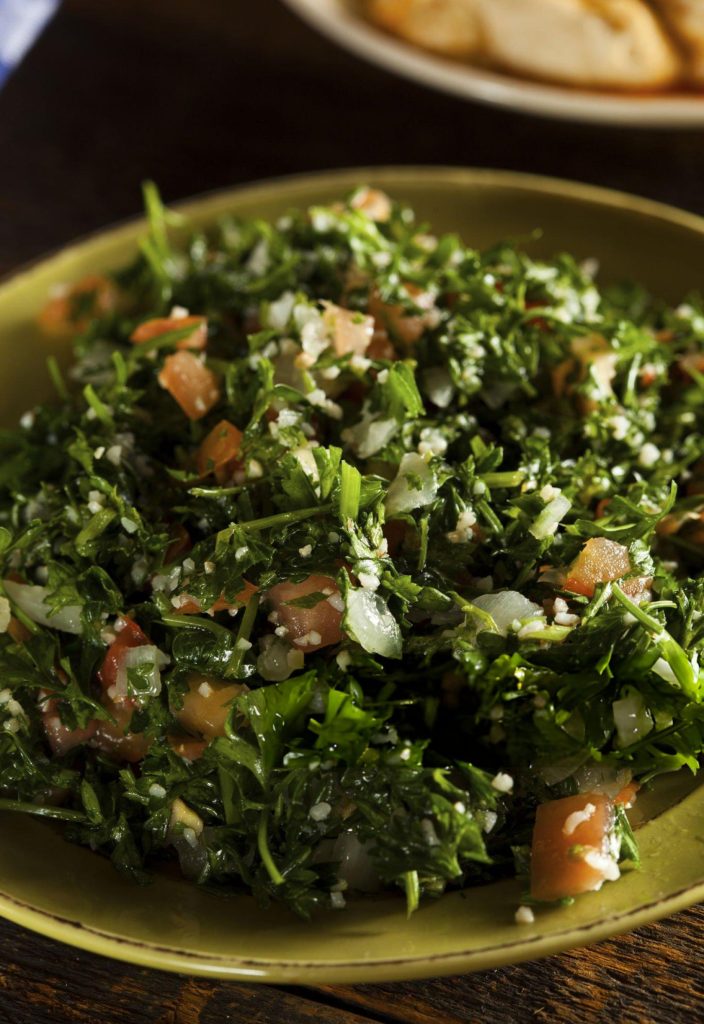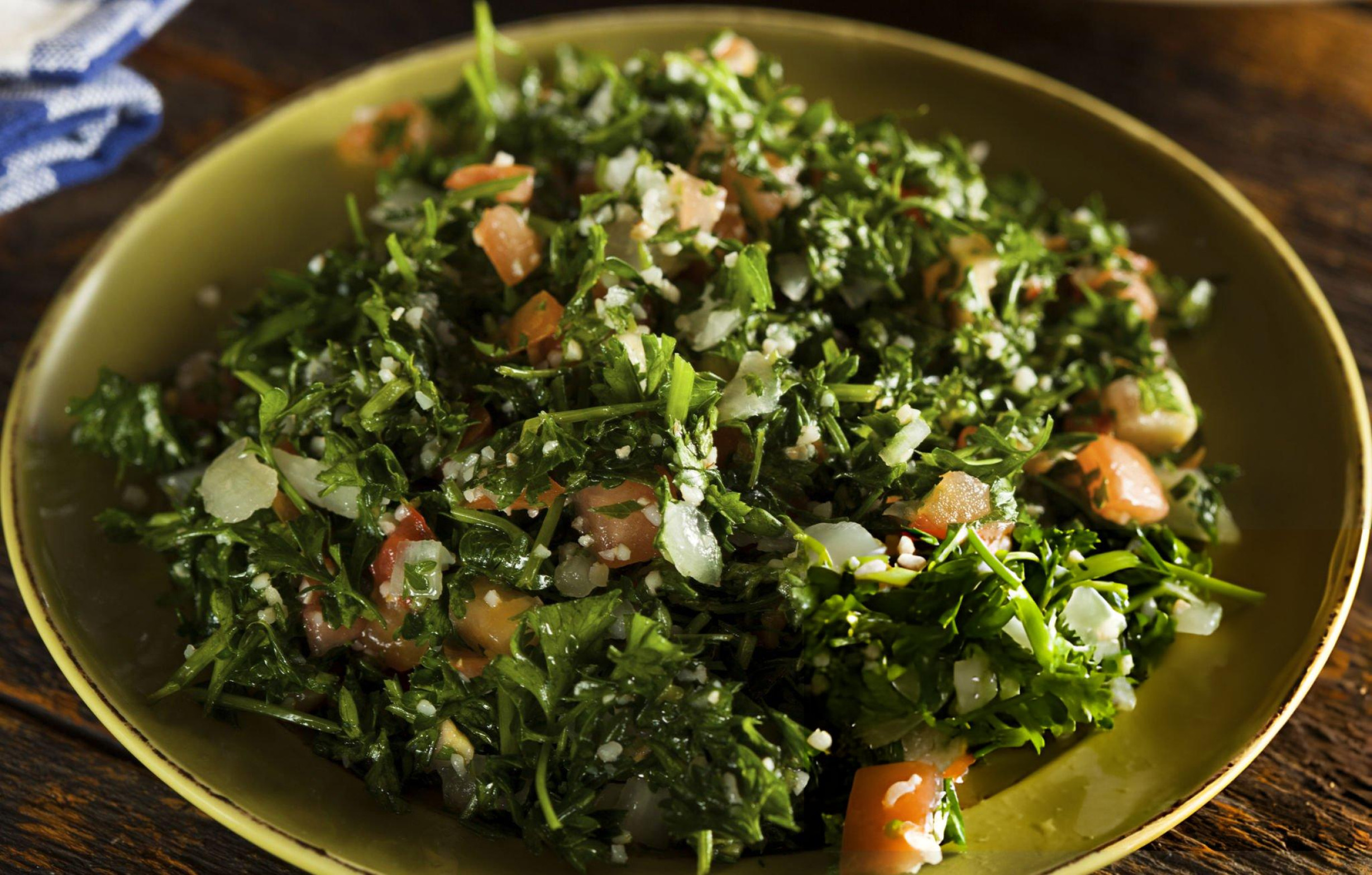Tabbouleh Recipe
Tabbouleh is a classic Middle Eastern salad that bursts with fresh, vibrant flavors and is packed with nutritious ingredients. This recipe blends finely chopped herbs, refreshing vegetables, and hearty bulgur wheat, all brought together by a zesty lemon and olive oil dressing. Perfect as a light meal or a side dish, tabbouleh is as healthy as it is delicious, offering a refreshing escape from heavier fare.

Ingredients Overview
The magic of tabbouleh lies in its fresh ingredients, each playing a crucial role in creating the dish’s signature taste and texture.
Fresh herbs like parsley and mint are the backbone of this salad, delivering a bright, slightly peppery taste that balances the richness of the olive oil. Parsley, finely chopped, forms the bulk of the salad, lending its unique flavor and vibrant green color. Mint adds a cooling element, giving the tabbouleh its refreshing quality that makes it so addictive.
Choosing the best vegetables is essential for achieving the perfect tabbouleh. Tomatoes should be ripe, juicy, and firm, offering a sweet counterpoint to the herbs. Cucumbers need to be crisp and fresh, adding a satisfying crunch that contrasts beautifully with the other soft ingredients. The quality of these vegetables directly impacts the final dish, so selecting the best available produce is key.
Bulgur wheat, a staple in many Middle Eastern dishes, provides the hearty base for this salad. It’s a quick-cooking grain that absorbs the dressing’s flavors while adding a subtle nutty undertone. Cooking bulgur is simple—just soak it in boiling water until tender, then fluff with a fork before mixing it into the salad. It’s this grain that helps make tabbouleh both satisfying and light.
Step-by-Step Preparation
Creating the perfect tabbouleh is all about balance and technique. Follow these steps for a flawless dish every time.
Begin by making the dressing, a simple yet flavorful blend of extra-virgin olive oil, fresh lemon juice, and grated garlic. The lemon juice brings a tartness that enlivens the palate, while the olive oil adds a rich, smooth finish. Ground coriander and a pinch of cinnamon introduce subtle, warm undertones, making the dressing the perfect complement to the fresh ingredients. Whisk everything together until well combined, ensuring the flavors meld into a cohesive whole.
Next, focus on chopping and mixing the herbs and vegetables. The parsley should be finely chopped—almost minced—so it integrates seamlessly with the other ingredients. The tomatoes and cucumbers should be diced into small, uniform pieces, ensuring each bite delivers a balanced mix of textures and flavors. The mint should be chopped just before adding to preserve its vibrant flavor.
When it comes to combining everything, it’s important to mix gently but thoroughly. Fold the bulgur wheat into the vegetables and herbs, making sure each grain is coated in the dressing. This step is crucial for even flavor distribution, allowing every bite to be equally delicious. Once combined, taste the salad and adjust the seasoning as needed, adding more lemon juice or salt if necessary.
Recipe Tips
- Chilling Time: Allow the tabbouleh to chill in the refrigerator before serving. This resting period helps the flavors to develop and meld together, resulting in a more cohesive and flavorful salad.
- Adjusting for Taste: Customize the tabbouleh to your liking by tweaking the lemon juice, salt, and spices. If you prefer a tangier salad, add more lemon juice. For a more robust flavor, increase the amount of garlic or coriander.
- Substitutions and Variations: Don’t be afraid to experiment with different grains or vegetables. Quinoa or couscous can replace bulgur for a gluten-free option, and additional vegetables like bell peppers or radishes can be added for extra crunch.

What to Serve With This Recipe
Tabbouleh is incredibly versatile and pairs well with a variety of dishes, making it a staple in many meals.
For perfect pairings, serve tabbouleh alongside grilled meats such as lamb, chicken, or beef, where its fresh flavors act as a refreshing counterpoint to the richness of the meat. It’s also an excellent companion to traditional Middle Eastern dishes like falafel or hummus, where it adds a light, herbaceous note to the meal. For a complete vegetarian meal, pair it with stuffed grape leaves or a variety of mezze platters.
Beverage suggestions to complement tabbouleh include refreshing drinks like mint lemonade or a cold glass of rosé. The acidity and herbaceous notes in these drinks echo the salad’s flavors, enhancing the overall dining experience.
Frequently Asked Questions
- Can I make tabbouleh in advance? Yes, tabbouleh can be made a few hours ahead of time. In fact, it’s recommended to let it sit in the refrigerator for a while to allow the flavors to meld together. Just be sure to give it a quick toss before serving.
- What can I use instead of bulgur wheat? If you’re looking for a gluten-free option, quinoa is a great substitute for bulgur wheat. It has a similar texture and absorbs flavors well, making it a perfect alternative.
- How do I store leftovers, and how long will they keep? Store leftover tabbouleh in an airtight container in the refrigerator. It will keep for up to 2-3 days, though the herbs may lose some of their vibrant color over time.
Serving and Presentation Ideas
Presenting tabbouleh in a visually appealing way can elevate the dining experience. Consider serving it in a shallow bowl to showcase the vibrant colors of the herbs and vegetables. A light drizzle of olive oil over the top adds a glossy finish that catches the eye.
Garnishing tabbouleh with a few whole mint leaves or a sprinkle of additional parsley not only enhances the visual appeal but also adds a fresh burst of flavor. For a touch of spice, a dusting of sumac or a few pomegranate seeds can provide a vibrant contrast.
Tabbouleh is a refreshing and versatile salad that’s perfect for any occasion. Its combination of fresh herbs, crisp vegetables, and hearty bulgur wheat creates a dish that’s both satisfying and light. Whether served as a side dish or as part of a larger meal, tabbouleh is sure to impress with its vibrant flavors and beautiful presentation. Give this recipe a try and experience the fresh taste of the Middle East in your own kitchen.

Ingredients
3 cups finely chopped curly parsley, approximately 2 bunches
⅔ cup cooked bulgur wheat*
1 cup diced English cucumber
1 cup cored and diced tomato
⅓ cup extra-virgin olive oil
3 tablespoons fresh lemon juice
1 garlic clove, grated
½ teaspoon sea salt
¼ teaspoon ground coriander
Pinch of cinnamon
⅓ cup finely chopped fresh mint
2 scallions, chopped
Instructions
Begin by whisking together the extra-virgin olive oil, fresh lemon juice, grated garlic, sea salt, ground coriander, and a pinch of cinnamon in a large mixing bowl. Once the dressing is well combined, fold in the finely chopped parsley, diced cucumber, and tomato. Add the cooked bulgur wheat, fresh mint, and chopped scallions. Gently toss everything together to ensure the ingredients are evenly coated with the dressing. Adjust seasoning to your taste, then chill the tabbouleh in the refrigerator until you’re ready to serve.

Tabbouleh Recipe
Ingredients
- 3 cups finely chopped curly parsley approximately 2 bunches
- ⅔ cup cooked bulgur wheat*
- 1 cup diced English cucumber
- 1 cup cored and diced tomato
- ⅓ cup extra-virgin olive oil
- 3 tablespoons fresh lemon juice
- 1 garlic clove grated
- ½ teaspoon sea salt
- ¼ teaspoon ground coriander
- Pinch of cinnamon
- ⅓ cup finely chopped fresh mint
- 2 scallions chopped
Instructions
- Begin by whisking together the extra-virgin olive oil, fresh lemon juice, grated garlic, sea salt, ground coriander, and a pinch of cinnamon in a large mixing bowl. Once the dressing is well combined, fold in the finely chopped parsley, diced cucumber, and tomato. Add the cooked bulgur wheat, fresh mint, and chopped scallions. Gently toss everything together to ensure the ingredients are evenly coated with the dressing. Adjust seasoning to your taste, then chill the tabbouleh in the refrigerator until you’re ready to serve.
Notes
- For coarse bulgur, bring 2 cups of water to a boil in a medium-sized pot. Add 1 cup of dry coarse bulgur, stir, then cover and remove from heat. Allow it to sit for 20 to 30 minutes until the bulgur becomes tender. Drain any excess water and fluff the grains with a fork. Measure out 2/3 cup of the cooked bulgur for the salad, and reserve the remainder for another dish. Let the bulgur cool to room temperature before mixing it into the salad.
For fine bulgur, place it in a bowl and cover with water by about 1/2 inch. Let it soak for 20 minutes, or until tender, then drain.

